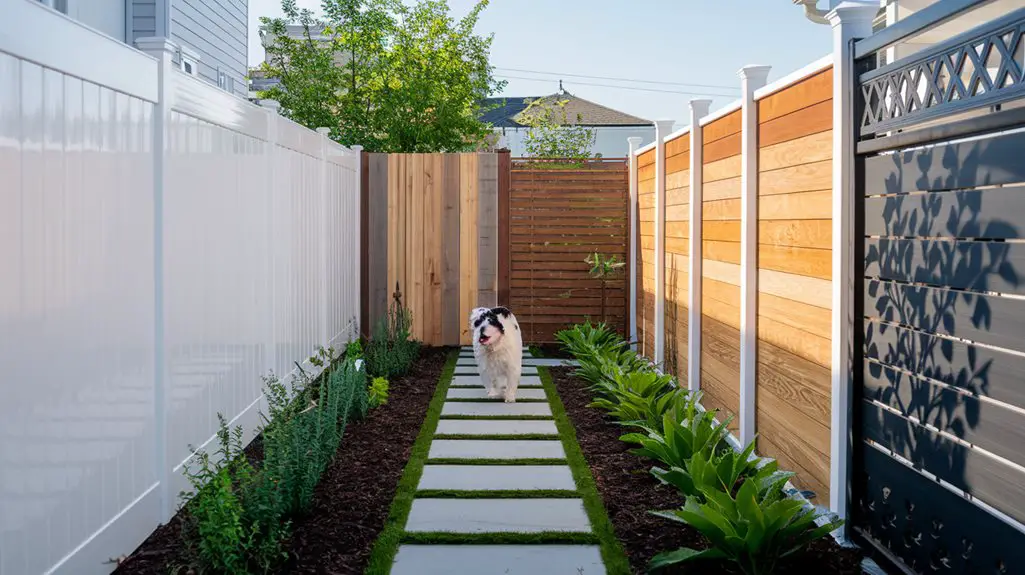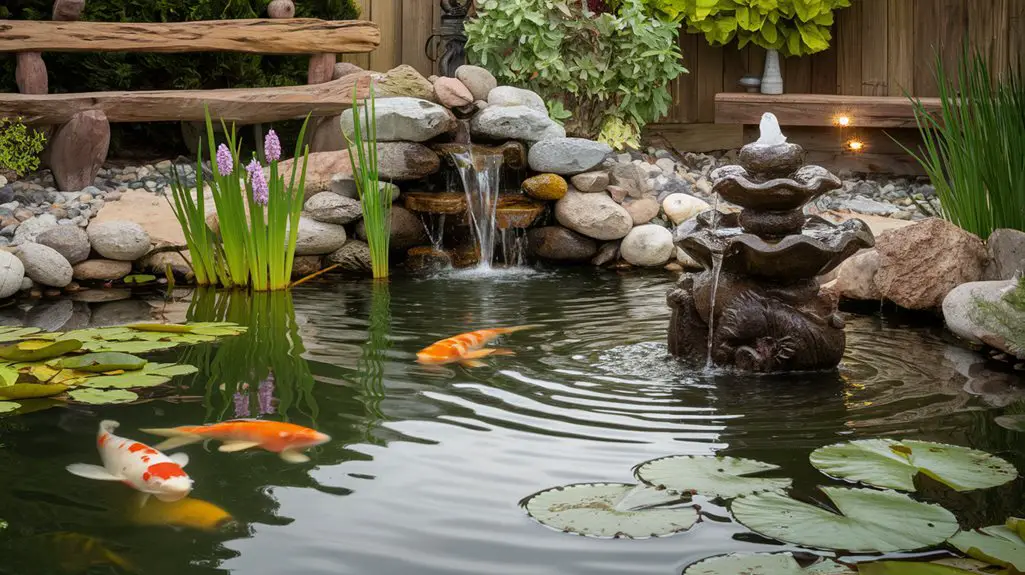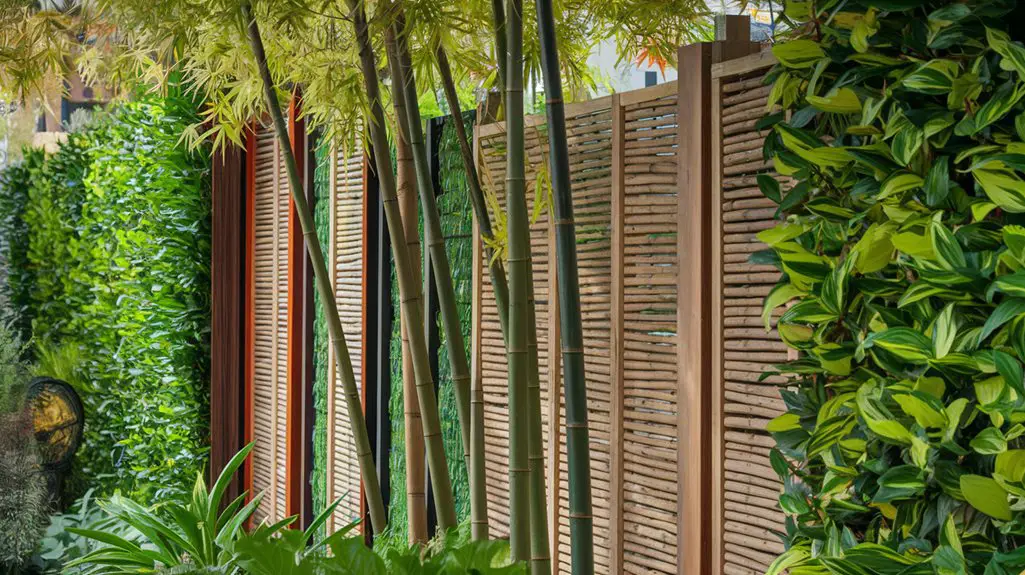Many people underestimate how essential the right privacy fencing is for their pets' well-being. Different pets have unique needs based on their size and behavior, which can greatly influence your fencing choice. A sturdy, tall fence can prevent escapes and provide a sense of security. But there's more to take into account than just height and material. Let's explore the factors that will help you create a safe haven for your furry companions.
Understanding Your Pet's Needs
When you think about choosing the right privacy fencing for your pets, it's important to first understand their specific needs.
Consider your pet's size, energy level, and temperament. For instance, a high-energy dog may need a tall fence to prevent jumping, while a small dog might require a secure barrier to keep them from slipping through.
If your pet is prone to anxiety, a solid fence can provide a sense of security, blocking distractions from the outside world.
You'll also want to think about their socialization needs; some pets thrive on interaction, while others prefer solitude.
Observing their behaviors can guide your decision, ensuring you create a safe and comfortable environment tailored to their unique personality and instincts. Additionally, it's beneficial to create a fun outdoor space that encourages safe play and interaction for both pets and guests.
Evaluating Different Fencing Materials
As you explore different fencing materials for your pets, keep in mind that each option has its own unique benefits and drawbacks.
Wooden fences offer a classic look and good privacy, but they can warp or rot over time.
Vinyl fencing is durable and low-maintenance, but it may not provide the same aesthetic appeal as wood.
Chain-link fences are cost-effective and allow visibility, but they offer minimal privacy and may not deter larger animals.
Aluminum provides strength and a sleek design, yet it can be pricey.
Consider the climate in your area, your pet's behavior, and the overall look you want for your yard. Additionally, selecting a fence design that adds value to homes can enhance both your property's appeal and functionality.
Balancing functionality with aesthetics will help you make the best choice for your furry companions.
Height Requirements for Effective Privacy

To guarantee your pets feel safe and secure while enjoying the outdoors, understanding height requirements for effective privacy is essential.
Generally, a fence height of at least six feet is recommended for most dog breeds, as this prevents them from jumping over. However, if your furry friend tends to climb or leap, you might want to take into account a taller option.
For smaller pets, a five-foot fence might suffice, but keep in mind that they can still feel vulnerable. Additionally, make sure the fence has no gaps or footholds, as clever critters can find ways to escape or peek through.
Incorporating creative fencing options can not only enhance privacy but also add charm to your garden space.
Ultimately, selecting the right height fosters a sense of safety, allowing your pets to roam freely without worry.
Design Considerations for Aesthetics and Functionality
Selecting the right height for your privacy fence not only protects your pets but also sets the stage for its overall design and functionality.
Consider materials that complement your home's architecture—wood adds warmth, while vinyl offers a sleek, low-maintenance option. Think about color too; a natural wood stain can blend beautifully with your landscape, while a bold hue can make a statement.
Incorporate design features like lattice tops for a touch of elegance or planters for greenery that softens hard lines. Additionally, exploring unique privacy fencing ideas can inspire creative solutions that enhance both privacy and style.
Guarantee the fence's style aligns with your outdoor space; a rustic design suits a country setting, while a modern look fits urban homes.
Ultimately, you want a fence that enhances your yard's aesthetics while serving its purpose effectively.
Safety Features to Look For

When choosing a privacy fence for your pets, it's important to prioritize safety features that guarantee their well-being.
Look for fencing materials that are non-toxic and sturdy, making sure your pets can't chew or break through them. A height of at least six feet can deter larger animals from jumping over.
Additionally, consider a solid design without gaps that could allow small pets to escape or get stuck. Opt for smooth edges to prevent injuries, and make certain there are no sharp points or protruding nails.
If you have a digger, burying the fence at least a foot underground can prevent escape attempts. Investing in a secure latch system also helps keep your pets safe from unexpected visitors. Furthermore, implementing creative privacy fencing solutions can enhance both safety and aesthetics in your outdoor space.
Maintenance and Durability of Fencing Options
After ensuring your privacy fence meets safety standards for your pets, it's time to think about maintenance and durability.
Different materials require varying levels of care. Wooden fences, while beautiful, need regular sealing and staining to prevent rot. On the other hand, vinyl fencing is low-maintenance, resisting fading and splintering, making it a popular choice among pet owners. Additionally, tall privacy fencing can significantly reduce noise levels, creating a more peaceful environment for both pets and homeowners.
Metal options, like chain link or wrought iron, are incredibly durable but may need occasional rust treatment. Whatever you choose, consider your local climate; extreme weather can impact longevity.
Regular inspections for damage and wear will help you catch issues early, ensuring your pets stay safe and secure in your yard while keeping your fence looking great for years to come.
Local Regulations and Guidelines
Before installing a privacy fence for your pets, it's important to familiarize yourself with local regulations and guidelines that may affect your project.
Check your municipality's zoning laws, as they often dictate fence height, materials, and placement. You might need a permit, especially for taller structures or specific materials.
Additionally, some neighborhoods have homeowners' associations (HOAs) with their own rules; reviewing these can save you from potential fines.
Don't forget to take into account property lines to avoid disputes with neighbors. If your area has restrictions on specific animals, verify your fence meets those standards.
Budgeting for Your Fencing Project
Understanding local regulations is just the start; budgeting for your fencing project is equally important.
Begin by determining the total area you need to enclose, as this will affect material costs. Next, research various fencing materials—wood, vinyl, or chain link—and their price ranges. Consider opting for maintenance-free options to reduce long-term upkeep costs and save time.
Don't forget to account for extra expenses like gates, hardware, and installation fees. If you're considering hiring a professional, get multiple quotes to guarantee you're getting a fair deal.
It's wise to set aside a contingency fund, typically 10-15% of your budget, for unexpected costs.
Tips for Installing Your Privacy Fence
When you're ready to install your privacy fence, it's crucial to plan each step carefully to guarantee a successful outcome. Start by marking the perimeter and checking local regulations. Next, gather your tools and materials. Here's a simple breakdown of what you'll need:
| Tool/Material | Purpose |
|---|---|
| Post Hole Digger | To create holes for fence posts |
| Level | To verify posts are straight |
| Concrete Mix | For securing posts in the ground |
Additionally, consider using unique materials for fencing that can enhance both privacy and aesthetics. Once you've prepared, dig your post holes and set the posts in concrete. After that, attach the panels securely. Always double-check your measurements along the way, and don't hesitate to ask for help if needed. Happy fencing!
Conclusion
Choosing the right privacy fencing for your pets isn't just about aesthetics; it's an essential step in ensuring their safety and happiness. Imagine a sturdy, six-foot barrier encasing your yard, allowing your furry friends to roam freely without the fear of escape or outside distractions. With careful consideration of materials, height, and safety features, you can create a sanctuary that meets their needs. Investing the time and effort into this project will pay off in the joy and security it brings.



